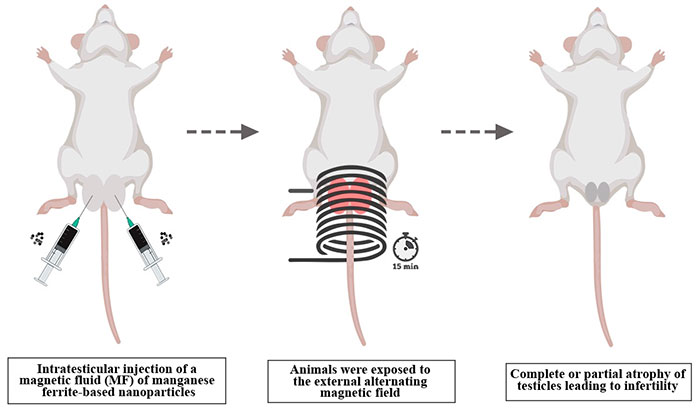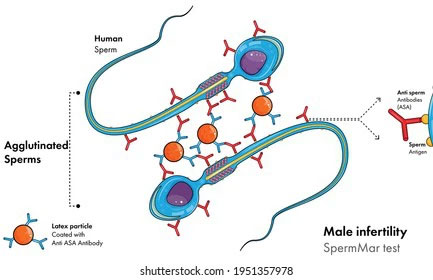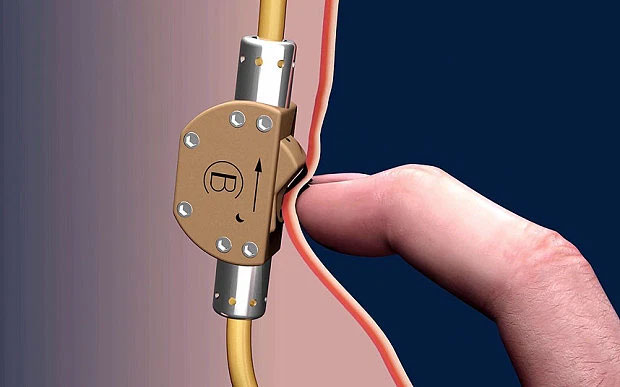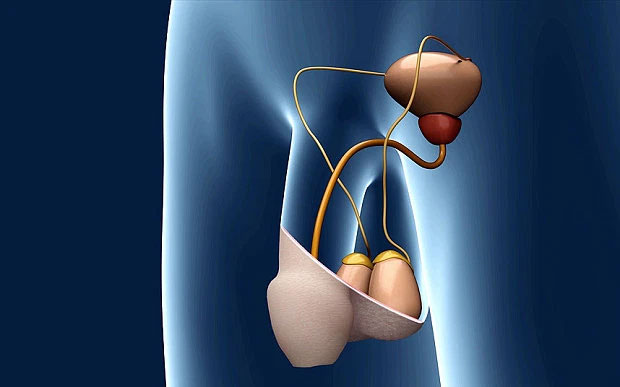This method has been applied in China for sterilizing cats without the need for castration.
This method has been applied in China for sterilizing cats without the need for castration. Every man has a “refrigerator” in their body. While body temperature in other areas fluctuates between 36.5 – 37 degrees Celsius, this refrigerator must always be cooler by 1-2 degrees.
You might have guessed what that part is? The testicles – which hang outside a man’s body to separate them from the influence of body temperature. The reason is that the optimal temperature for sperm production lies between 34.5-36 degrees Celsius.
When warmer, spermatogenesis will be reduced, and if the testicles get too hot, it can even lead to infertility. (Advice for men is to never place a laptop on their lap, wear overly tight clothing while exercising, or soak for too long in a hot bath).
However, a group of Chinese scientists wants to apply this very principle to create a male contraceptive method. The method is called nanocontraception – based on tiny iron oxide nanowires that temporarily heat the testicles – promising to help men share the responsibility with women, as birth control pills often have many side effects.

While body temperature in other areas of a man’s body fluctuates between 36.5 – 37 degrees Celsius, the testicles must always be cooler by 1-2 degrees.
Heating the Testicles
Essentially, the current nanocontraception prototype works like this: Doctors will place your testicles on two magnets. Then they inject a nearby vein with a shot containing tiny iron oxide nanowires.
These iron oxide nanowires are only 1/1000 the size of a hair, allowing them to move easily through the bloodstream. They will be attracted to the testicles by the magnets. After that, the magnets are removed and replaced with a coil of wire.
Next, the doctors will send an electric current through the coil to create a magnetic field, heating the iron oxide nanowires, thereby raising the temperature inside your testicles to between 37-42 degrees Celsius. At this temperature, your spermatogenesis will be temporarily suppressed and rendered ineffective. Now, you can engage in sexual intercourse without the risk of conception.
Experiments on mice show that the effects of the nanocontraception therapy will last about a week before fertility gradually returns. The iron oxide nanowires are then expelled by the liver and spleen, returning your body to its original state.

Fei Sun, a biologist leading the research project at the National Laboratory of Micro Physics, stated that this method has already been applied in China for sterilizing cats without the need for castration.
The research team also mentioned that they are targeting applications in the fields of livestock and zoos before perfecting it for use by men.
A current challenge is to make this method simpler and more accessible. Not every man is willing to inject a needle near their testicles and place a magnet or wire under their “refrigerator” once a week.
Therefore, Sun said they will need to create an oral medication containing iron oxide nanowires and find a way to deliver them to the testicles without magnets. The heating process could also be simplified using some device, such as a chair with coils inside, similar to wireless charging for phones.
Most importantly, the research team needs to carefully calculate the temperature and reversal process of this contraceptive method. Because excessively high temperatures can cause testicular atrophy and lead to prolonged reversal processes, lasting months or even permanently irreversible.
Nanocontraception has already been successfully applied to cats. Researchers are now targeting the next subjects, which are zoo animals, before testing it on humans.
Many Male Contraceptive Methods Are Being Developed
To this day, we know that contraceptive methods for women have always been more numerous, effective, and easier to use compared to men. Women have daily pills, emergency contraceptive pills, intrauterine devices, and slow-release implants. But men only have two options for contraception: condoms or vasectomy. Both methods have their drawbacks.
Condoms can break or be improperly worn. Some men are even allergic to latex, the material used to make standard condoms. Vasectomy is an invasive surgical procedure that can be painful and difficult to reverse.
This means that once a vasectomy is performed, reconnecting them for conception is very difficult, and few young men choose this contraceptive method. Therefore, the search for new contraceptive methods for men continues.
Why is it so difficult to create a male contraceptive pill?
In 2019, a research team at the Los Angeles Biomedical Institute successfully conducted Phase I clinical trials of a male contraceptive pill named 11-beta-MNTDC.
The drug works by blocking testosterone in the testicles, reducing sperm production while still allowing testosterone to appear in other areas of the body, keeping men looking masculine, with body hair, deep voices, and normal sexual function and desire.
In a study published in the journal Nature Communications in 2021, American scientists also discovered a compound called triptonide that can prevent sperm from swimming forward. Experiments on monkeys given this drug showed that they could control their fertility for 3-6 weeks.
Also last year, a group of molecular engineers at the University of North Carolina developed a vaccine capable of binding sperm, preventing them from swimming through cervical mucus to reach and fertilize the egg.
This vaccine uses antibodies against sperm that can latch onto their tails, causing up to 97% of sperm to become immobilized. These sperm antibodies have been observed in patients with immune infertility or some COVID-19 patients after they recovered.

Antibodies from the injection tightly bind to sperm, preventing them from moving freely.
In addition to chemical drugs that may cause side effects, mechanical interventions with male vas deferens are also being researched for improvements. For example, in 2016, about 25 men in the United States had an implant of a valve in their vas deferens under the skin, allowing them to turn their reproductive function on and off at will.
A similar method called vas deferens plug is also being developed by scientists. Instead of cutting the vas deferens in half and tying them like the current vasectomy procedure, the vas deferens plug only involves injecting a type of gel that seals the lumen of the vas deferens to prevent sperm from flowing out.
This method is much easier to reverse than traditional vasectomy, which requires surgery to reconnect. When you no longer want the vas deferens plug, you simply inject a liquid that dissolves the gel plug, and that’s it.


The vas deferens plug method is also being developed by scientists.
A temporary idea for a vas deferens plug
However, all the above new contraceptive methods for men are still not available on the market or can be implemented on a large scale. The reason is that this research field has received little interest from pharmaceutical companies because the investment is high while the profits are low.
Therefore, scientists are currently relying on government funding to develop these new male contraceptive methods. This research path will certainly take longer than if carried out by private companies. Thus, it is best for men to keep condoms handy in their wallets in case they need them.


















































